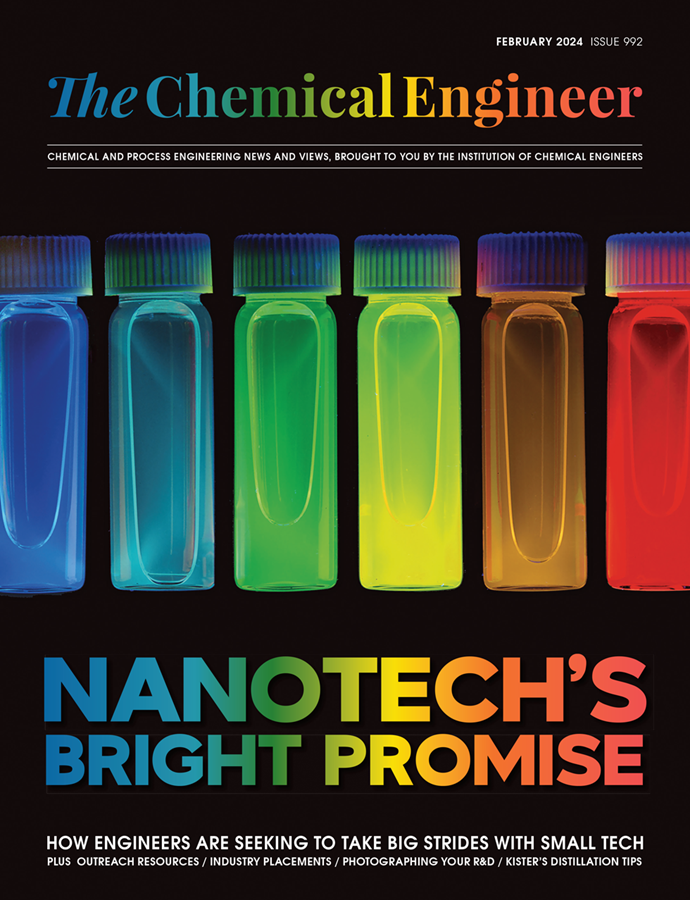Novel method for green ammonia production

RESEARCHERS at Monash University, Australia have discovered a method for producing green ammonia that could benefit agriculture, as well as transport.
Ammonia is an important commodity for fertiliser production. Typically, it is produced using the Haber-Bosch process, an established technology that requires high temperature (300–500°C) and pressure (20–30 MPa). According to the Royal Society, the process is responsible for around 1.8% of global CO2 emissions. With demand for ammonia set to increase, green production is vital to allowing the world to stay on the path towards net zero.
Monash researchers discovered an electrochemical method for production that relies on a phosphonium cation as a proton shuttle. Research Fellow Bryan Suryanto said the reaction can produce ammonia “at room temperature. at high, practical rates and efficiency”. Importantly, the Monash team showed that the phosphonium cation is recycled during the process.
Doug MacFarlane, Professor of Chemistry at Monash, explained that the process developed takes place in an electrochemical cell, where water and nitrogen gas (separated from air) are fed in. At the cathode, the presence of nitrogen leads to the reduction of lithium ions (in the electrolyte) to lithium nitride, which is then protonated to release ammonia (NH3). This leaves the cell in the gas stream and is then separated from circulating nitrogen. It can then be compressed and liquefied, then stored.
After donating a proton, the phosphonium cation becomes an ylide, which cycles to the anode where it is reprotonated into its phosphonium form by reacting with protons from hydrogen.
In 20-hour experiments, under 0.05 MPa hydrogen and 1.95 MPa nitrogen, the research team achieved production rates of 53 ± 1 nmol/s/cm2. Since publishing their work, the team has increased yield, and according to MacFarlane they are working to achieve a unit that produces 100 g/d of ammonia, this year. MacFarlane added that this is a scale of production that would be useful in small hydroponic and commercial greenhouse applications.
A future goal for the team is to create shipping-container-sized plants that generate 1 t/d of ammonia, consuming 1 MW of energy, which could be located at and used by farms. The plants could be powered by dedicated solar and wind farms.
Small, localised plants are a potential benefit offered by this technology as compared to Haber-Bosch, which cannot be achieved economically at smaller scales because of the need for high temperature and pressure conditions.
Another potential benefit of small, localised facilities is that it could help avoid the polluting effects of fertiliser. MacFarlane said that in some contexts, the ability to produce fertiliser “on demand” would allow farmers to apply it in smaller amounts more frequently, or even continuously, rather than add it in bulk at certain stages in the plant growth cycle. As a result, fertiliser would not be left to sit in the soil for long periods and oxidise into byproducts such as nitrates – which can run off and leach into groundwater – or the greenhouse gas nitrous oxide, which evaporates from fields.
Work to achieve scaleup goals is a remit of Jupiter Ionics, the spin-out company which is working to develop commercial applications.
In addition to fertiliser production, ammonia can be used to replace fossil fuels in many applications, such as in the transport sector, and by acting as a hydrogen carrier and energy store.
Considering other applications for ammonia, especially use in the energy system, MacFarlane highlighted the need to be aware of potential issues of pollution. Using ammonia as a fuel can lead to fugitive losses from engines of polluting compounds such as ammonia, nitrous oxide, and other nitrogen oxides. He warned that it is therefore important to employ mitigations, to avoid damaging the environment with nitrogen compounds as we have with CO2 and other carbon compounds.
Science: https://doi.org/gkh2q3
Recent Editions
Catch up on the latest news, views and jobs from The Chemical Engineer. Below are the four latest issues. View a wider selection of the archive from within the Magazine section of this site.




